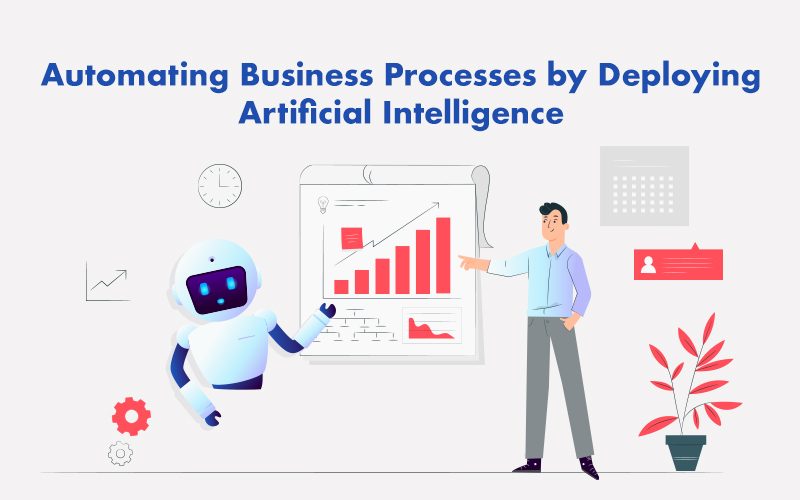Many businesses adopt artificial intelligence (AI) technology because it helps them in reducing their operational costs, increasing efficiency, growing revenue and improving customer experience. However, for maximum advantages, they should also resort to other smart technologies that include machine learning (ML) natural language processing (NLP) into their processes. These technologies are great at replacing the lower-level, repetitive tasks. But businesses often achieve the highest performance and results when humans and machines work together. Hence, companies should consider AI for augmenting purposes, instead of replacing human capabilities, to make the most out of it.
Ways to Automate Business Process by Adopting AI
Today, every business is aware of the AI’s operational benefits in the modern technological territory ruled by data mining. However, it also poses a question for human operators: which tasks they should assign to machines and which they should operate manually. Here are some ways to solve such challenges to make way for a paradigm shift:
Investing in Data Intelligence
Many app development companies provide AI and Machine Learning development services for developing real-time solutions. It also makes an organization free from all the risks associated with data security and validation. Similarly, businesses can also build their own AI applications if they are dealing with a very niche product. Whether it’s a small, medium or large scale business, massive and immediate investment can prove to be detrimental.
They can begin by first-party app integration to increase employee productivity. Then they can move towards more open-sourced AI systems which provide more flexible workflow as organizations have already invested in data intelligence resources. If they want to build their own application, many cloud platforms also offer ways to make an AI application with all the required tools and modules.
Implementing Analytics and Insights
Implementing AI includes everything from applications, production, investments, an AI-driven culture, work environment and management. Creating an organized two-way network between Machine Learning with human supervision would eventually assist in gaining better insights regarding producing the right output from the machine. The supervision can ensure that humans are capable of enhancing or restricting output algorithms.
AI analysis is another vital process that includes predictive analysis for broadening the scope of business. It’s excellent for the businesses not looking to invest heavily on ML. Many analytics software systems offer business intelligence solutions. AI-cloud is an excellent option for any business to invest as it can save costs, maintain infrastructure, and is easily scalable.
Integrating Proactive Strategies
A systematic approach to utilize the tools from a spectrum that can either solve business problems or have higher potential; can help in building a growth path that is robust and proactive. By adopting AI broadly, employees up and down the hierarchy can augment their own judgment and intuition with algorithms’ recommendations. They can arrive at better answers than either humans or machines could reach on their own. Organizations must shed the mindset that an idea needs to be fully loaded or have full potential already even before deploying it.
On the first iteration, AI applications cannot have all their desired functionality that can be changed by testing and learning and making mistakes as a source of discoveries to reduce the fear of failure. Getting early user feedback and incorporating it into the next version allows companies to correct minor issues before they become costly problems. This way, development can also speed up, which will enable small AI teams to create minimum viable products quickly and easily.
API Approaches and Coding
API-based scoring approaches and methods are especially for cloud storages used for making predictions using simple requests based on codes. Both cloud and on-premises solutions frequently provide a reliable means to send data to a server for generating forecasts. These methods are cheap, easy to implement and have lower risks. Since API solutions abstract away scoring code, they have lesser chances of introducing scoring errors in the implementation process.
Many machine learning packages export some serialization of the models. These approaches allow machine learning tools to output production-grade code to implement in a more extensive system. They have flexibility, custom implementation capabilities and are fast. Scoring code enables you to build whatever system that you want to support it.
Concluding Words
Your business requires a combination of meeting the needs of the tech and team’s vision while building an AI system. Even before starting to design an AI system, you should have a balance to organize your tools around specific aspects of your team and its vision. It is equally essential to achieving its research goals by understanding the requirements and limitations of the hardware. WeCode is a leading AI development company that combines Machine Learning solutions and help in discovering new sets and patterns of unstructured data. Our engineers help businesses in automating and prioritizing the decision making processes by leveraging the overall automation.


